
PART TWO: Tiny homes may have a small footprint, but they require big-picture thinking.
These efficient, adaptable dwellings are gaining popularity across the country as communities search for solutions to housing shortages, land constraints, and meeting sustainability goals. Whether developed as part of a transitional housing initiative, an infill redevelopment, or a private pocket neighborhood, tiny home communities depend on strong, thoughtful planning from day one.
Each step, from understanding site conditions to designing efficient infrastructure and stormwater systems, shapes how well the community functions and how it will serve residents in the years ahead. Building on part one’s discussion of zoning, this second installment in our three-part insider series on tiny home development explores the key planning considerations that help communities create lasting, functional tiny home neighborhoods.
Building the Foundation: Community Buy-In and Feasibility
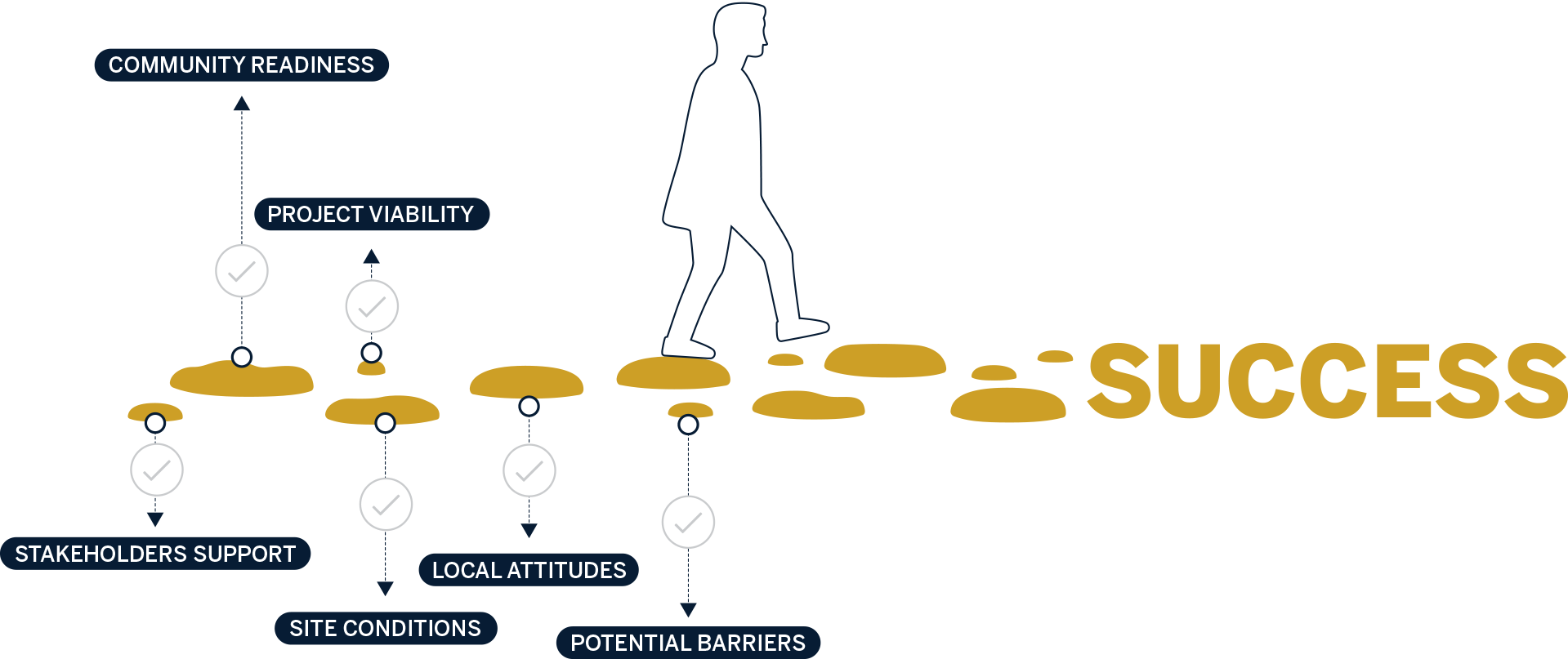
Gaining support from key stakeholders such as city councils and county boards is critical early on. A feasibility study helps evaluate community readiness, site conditions, and overall project viability. Understanding local attitudes and identifying potential barriers from the beginning helps create a clear, actionable path forward.
Examples of fostering community buy-in include town halls, public outreach campaigns, and questionnaires. By incorporating the feedback, concerns, and questions gathered, you can move forward with greater confidence into the design phase of a residential development.

Community members may want clarity on a range of topics before offering their support, such as: How will the development affect traffic or parking? Will tiny homes be owner-occupied or rented? How will long-term maintenance and property values be managed? What types of services and infrastructure will be included? Addressing these questions early not only builds trust but also helps align the development with community priorities.
Prioritizing Due Diligence
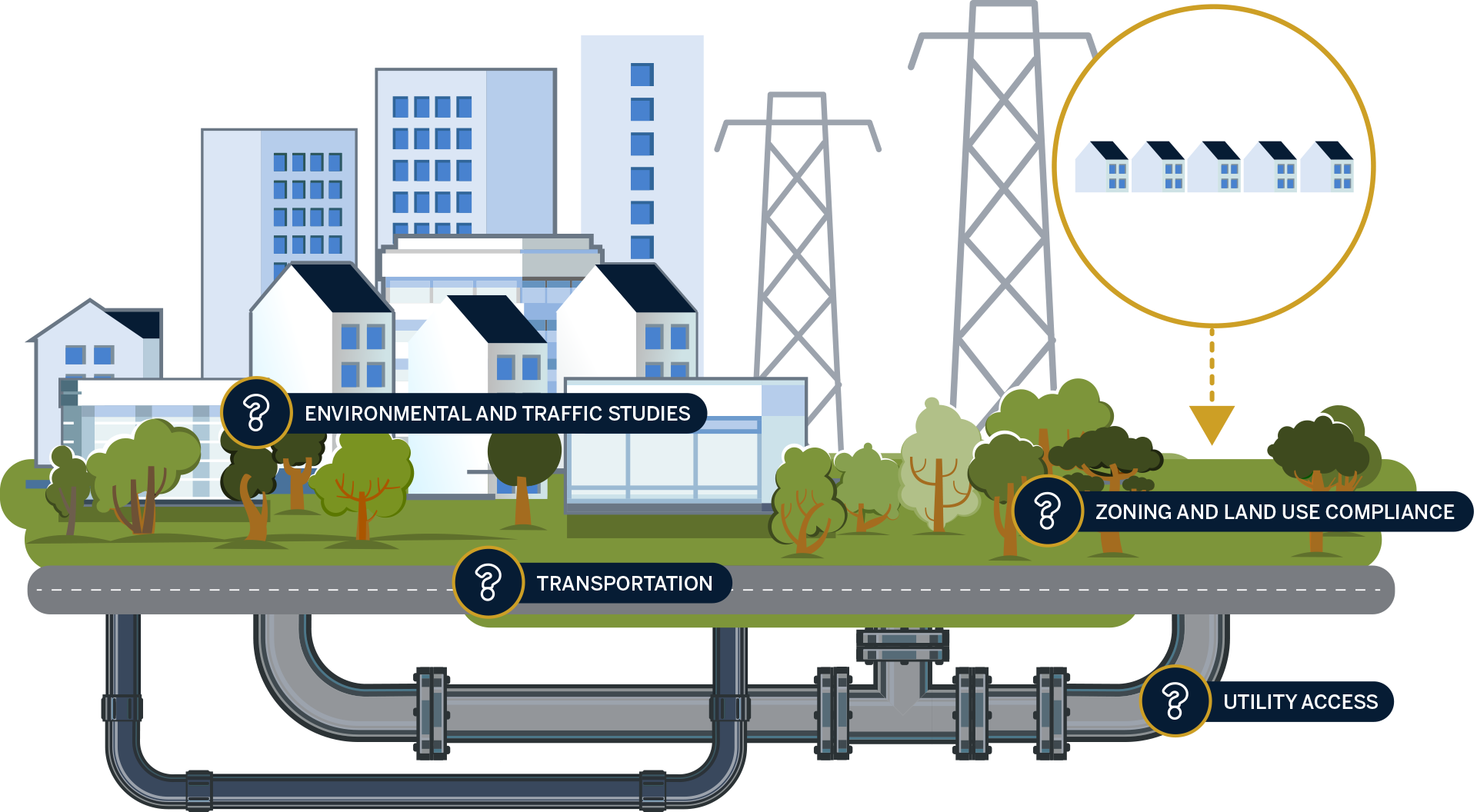
Once feasibility is confirmed, due diligence ensures the site can adequately support the development. Key considerations include:
- Utility Access: Confirming access to essential services like water, sewer, and electricity. It’s important to understand not only availability but also capacity: Can existing infrastructure handle additional demand, or will upgrades be necessary?
- Transportation: Evaluating connectivity to major roads and public transportation options. Considerations should also include pedestrian and bike access, especially if the development is intended to serve residents who may not rely on personal vehicles.
- Environmental and Traffic Studies: Understanding the potential impacts on the environment and local traffic patterns. Wetlands, floodplains, soil stability, and existing vegetation should all be evaluated, along with how new traffic generated by the development could affect nearby intersections or school zones.
- Zoning and Land Use Compliance: Reviewing current zoning codes, land use designations, and any variances or conditional use permits that may be required. Tiny homes often challenge traditional zoning frameworks, so this step is essential to avoid regulatory setbacks. Check back to the first article in this series for more on zoning!
With due diligence complete and key site constraints understood, the next step is to take a closer look at how the location fits into the broader community fabric through detailed site planning and infrastructure assessments.
Site Planning: Sub-Area Plans and Infrastructure Readiness
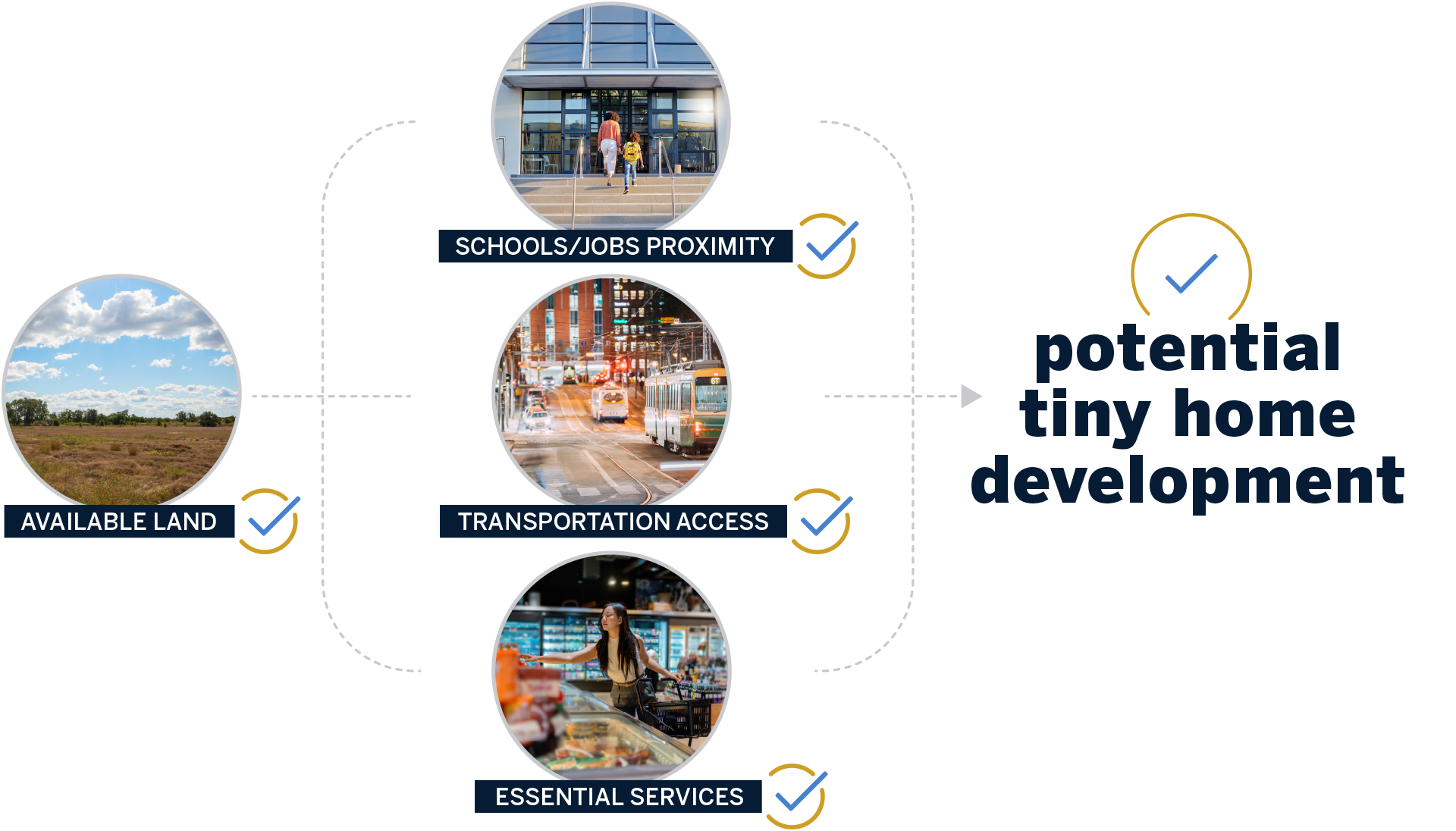
Identifying a potential site for a tiny home development goes beyond simply finding available land. It requires a thorough evaluation of transportation access, proximity to jobs, schools, and essential services to ensure residents can meet their daily needs without hardship. Sub-area planning plays a key role in this process by analyzing how the site fits within the broader community context. It also helps maximize land use by thoughtfully organizing units, access roads, green space, and shared amenities to make the most of smaller lot sizes. Proactively addressing these elements not only reduces costly surprises later on, but also builds community support by ensuring the project complements surrounding land uses and long-term growth plans.
Designing for Flexibility and Sustainability
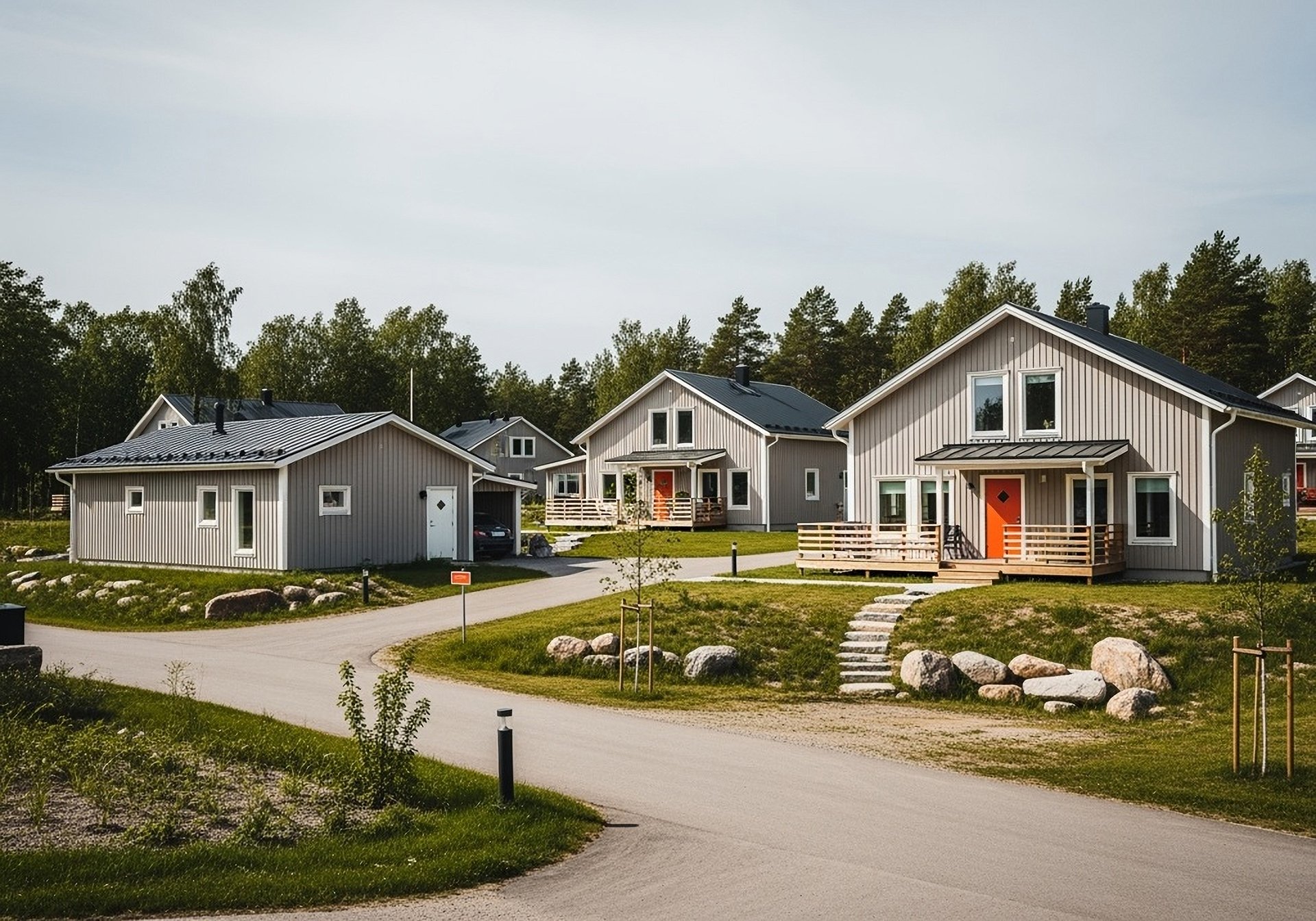
Decisions made during the design phase, such as choosing modular or on-site builds and selecting a layout, directly shape site planning, utility needs, and long-term outcomes. Sustainability should also be a key focus, with stormwater management, water treatment, and development density carefully considered to minimize environmental impact. Several design options can be adapted based on site conditions, infrastructure capacity, and the intended resident population:
- Cluster or Pocket Neighborhoods: Homes are arranged around shared green space, walkways, or a central courtyard. This setup fosters a sense of community and allows for shared stormwater, parking, or utility infrastructure. Ideal for smaller urban infill sites.
- Grid or Modular Layouts: A simple, uniform layout with consistent lot sizes and spacing. This approach makes it easier to phase development, install utilities, and scale the project. Best suited for larger or master-planned sites.
- Mixed-Use or Transitional Developments: Integrates housing with community buildings, services, or commercial uses. This model supports a wider range of residents, including those in need of workforce or transitional housing, and helps activate surrounding areas.
- Detached vs. Attached Units: Detached units offer privacy and flexibility in design, while shared-wall units reduce construction costs, increase density, and streamline utility connections. The choice depends on space, budget, and population goals.
- Shared Amenities and Infrastructure: Centralized features such as laundry facilities, gardens, storage, community centers, or parking reduce individual home footprints and create shared value for residents.
One example of a project shaped by sustainability goals and site-specific conditions is the Rock Creek Affordable Housing Subdivision, where the Town of Ignacio partnered with SEH to assist with planning and design of a residential development on a Town-owned parcel within its municipal limits. Design elements include substantial off-site storm sewer extension, coordination with the power company, and subdivision platting and approvals. SEH also provided coordination with the modular home builder chosen to provide units for the project.
Delivering Lasting Impact
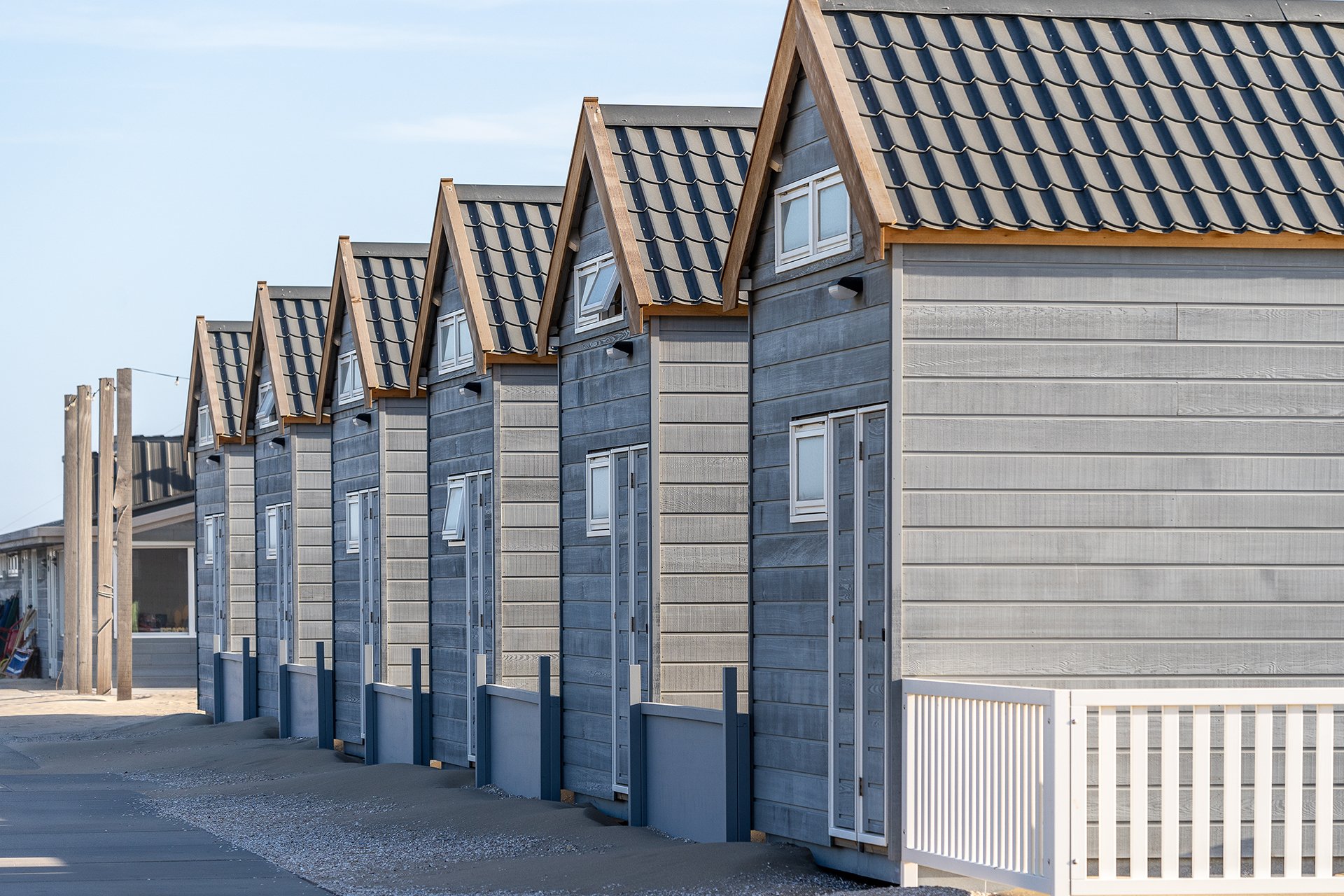
With careful and strategic planning, tiny home developments can grow into vibrant, eco-conscious neighborhoods. From early stakeholder engagement to sustainable design, every element contributes to building successful, long-lasting projects.
Planning to build a tiny home development? Stay tuned for part 3, where we explore funding options to help bring your project to life.

Erica Olsen, PE, is a principal and regional practice center leader at SEH, where she oversees civil engineering and water resources practices, ensuring responsive and resourceful project management. With a commitment to enhancing communities, multimodal projects, and sustainable engineering design, she enjoys the challenge of creating vibrant, livable spaces. A passionate advocate for community improvement, Erica brings experience in projects that not only meet technical standards but also align with the community aspirations and needs.
*Registered Professional Engineer in CO

.png?width=113&name=SEH_Logo_RGB%20(1).png)
